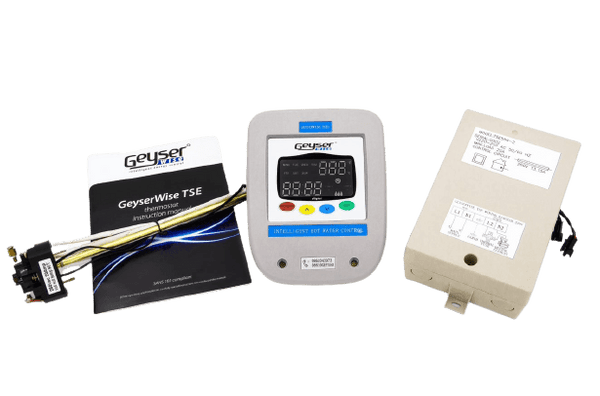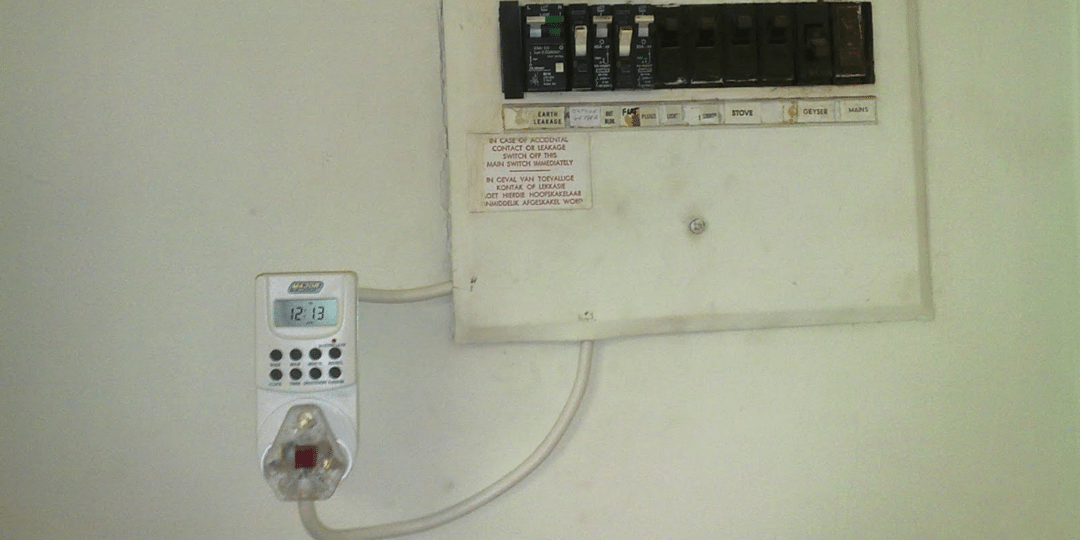Understanding the Common Issues Associated With Geyser Timers for Reliable Water Heating
The reliable performance of geyser timers is necessary for enhancing water home heating efficiency, yet users typically encounter a range of usual problems that can jeopardize efficiency. Understanding these factors is key to making sure that hot spring systems operate at their ideal, welcoming a more detailed assessment of the solutions that can deal with these prevalent problems.
Common Breakdowns

One widespread breakdown is the failing of the timer to launch heating cycles. This can occur as a result of electric issues, such as a blown fuse or malfunctioning wiring, protecting against the timer from obtaining power. Another usual trouble is inconsistent temperature level regulation; the geyser may get too hot or fall short to warmth water appropriately. This might be credited to a malfunctioning thermostat or sediment build-up within the tank, insulating the burner.

Incorrect Timer Settings
Misconfiguration of timer setups is a common issue that can lead to substantial inadequacies in hot spring operation. When timers are established inaccurately, they might turn on the geyser at suboptimal times, resulting in either inadequate home heating of water or excessive power consumption. If the timer is programmed to turn on during top electricity hours, it not just inflates energy costs but additionally leads to unneeded stress on the electric framework.
In addition, incorrect timer setups can interrupt the schedule of warm water when required - geyser timer. An inadequately configured timetable may leave houses without warm water during peak usage durations, creating aggravation and stress. Conversely, constant operation as a result of misconfigured timers can cause overheating, increasing and damaging the hot spring maintenance expenses
To minimize these problems, normal checks and updates of timer settings are important. Individuals should acquaint themselves with their hot spring's home heating requirements and readjust the timer to line up with their particular needs. Carrying out an easy to use organizing system can additionally streamline this procedure, ensuring ideal efficiency and making best use of energy efficiency. Effectively configured timer setups ultimately add to a much more affordable and lasting water home heating service.
Compatibility Issues
Compatibility concerns can substantially affect the performance of geyser timers, particularly when incorporating with different heating systems or smart home technologies (geyser timer). Many hot spring timers are designed to collaborate with specific sorts of hot water heater, such as resistive burner or gas-fired systems. If a timer is not suitable with the heater, it may not operate correctly, bring about ineffective water home heating or perhaps damage to the system
Additionally, as wise home technology remains to progress, the combination of hot spring timers with home automation systems can posture difficulties. Not all geyser timers offer the exact same level of connection, which can hinder their capacity to communicate properly with mobile applications or wise centers. Customers may discover themselves not able to control their hot spring timers from another location or established timetables that line up with various other wise devices in their home.
Moreover, the compatibility of geyser timers with existing electric facilities can also be a problem. Variations in voltage rankings, electrical wiring standards, and circuit configurations can bring about operational issues. As a result, it is important to completely evaluate compatibility with both the heating devices and the home's electrical system prior to selecting a hot spring timer to ensure ideal performance.
Power Supply Troubles
Power supply issues can badly hinder the capability of geyser timers, leading to unstable procedure and enhanced energy prices. These problems might come from insufficient voltage supply, irregular power resources, or damaged wiring. A geyser timer requires a secure electrical input to operate optimally; changes can cause irregular efficiency or complete failing.
Moreover, incorrect voltage rankings can damage the timer, making it faulty. It is important to make sure that the geyser timer is compatible with the electric requirements of the setup website. In addition, power rises or interruptions can disrupt the timer's programs, leading to ineffective heating cycles and unexpected functional hold-ups.
In some cases, the placement of the geyser timer might also add to original site power supply obstacles. For example, if set up too far from the major source of power, voltage drop can take place, impacting efficiency. Regular tracking of the electrical system and prompt recognition of any kind of anomalies can alleviate these problems. In circumstances of persistent power supply that site issues, speaking with a certified electrical expert is recommended to make sure that the electrical facilities appropriately supports the geyser timer's requirements. Proper attention to power supply can enhance the efficiency and durability of the geyser timer system - geyser timer.
Upkeep and Troubleshooting
Routine maintenance and troubleshooting are essential for making certain the trusted procedure of hot spring timers. Routine checks must consist of evaluating the timer's links and wiring for any type of indications of wear or damage. Make sure that all electric elements are protected and totally free from rust, as this can influence performance. Frequently tidy the timer unit and surrounding areas to stop dust accumulation, which can conflict with its operation.
If issues emerge, start repairing by resetting the timer to its default settings. Confirm the power supply to make certain the timer is receiving adequate voltage.
Furthermore, take into consideration organizing expert assessments each year to resolve prospective issues proactively. This method can prolong the lifespan of the geyser timer and maximize its effectiveness. By prioritizing upkeep and efficient troubleshooting, customers can alleviate common problems and ensure constant performance from their hot spring timers.
Final Thought
In conclusion, recognizing and attending to the usual issues associated with geyser timers is essential for maximizing water heating efficiency. Timer breakdowns, inaccurate settings, compatibility challenges, and power supply problems can dramatically influence performance.
The reliable functioning of geyser timers is crucial for optimizing water heating why not try here performance, yet customers often encounter a variety of common issues that can compromise performance. When timers are established improperly, they may turn on the hot spring at suboptimal times, resulting in either insufficient home heating of water or extreme power usage.Compatibility issues can dramatically influence the efficiency of hot spring timers, especially when incorporating with different heating systems or wise home technologies. Several geyser timers are created to work with certain kinds of water heaters, such as resisting home heating components or gas-fired systems.In verdict, identifying and addressing the typical concerns associated with geyser timers is vital for maximizing water home heating effectiveness.